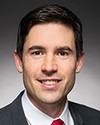Thank you, Mr. Chair.
I was thinking of addressing this topic a little later, but I feel I must do so now: water falls under natural resources, which is a provincial jurisdiction.
On the subject of other possible agreements, subclause 25(1) of Bill C‑61 raises a certain number of questions in terms of jurisdiction and encroachment into provincial areas of jurisdiction. The government should be questioned about the wording of clause 25, which allows Ottawa to enter into agreements directly with cities.
In my opinion, it would be inappropriate for such a thing to happen in Quebec. That said, has Quebec agreed to your bill? Does Bill C‑61 take into account the Quebec government's National Water Policy? Has the Quebec government given you the go-ahead on this?




